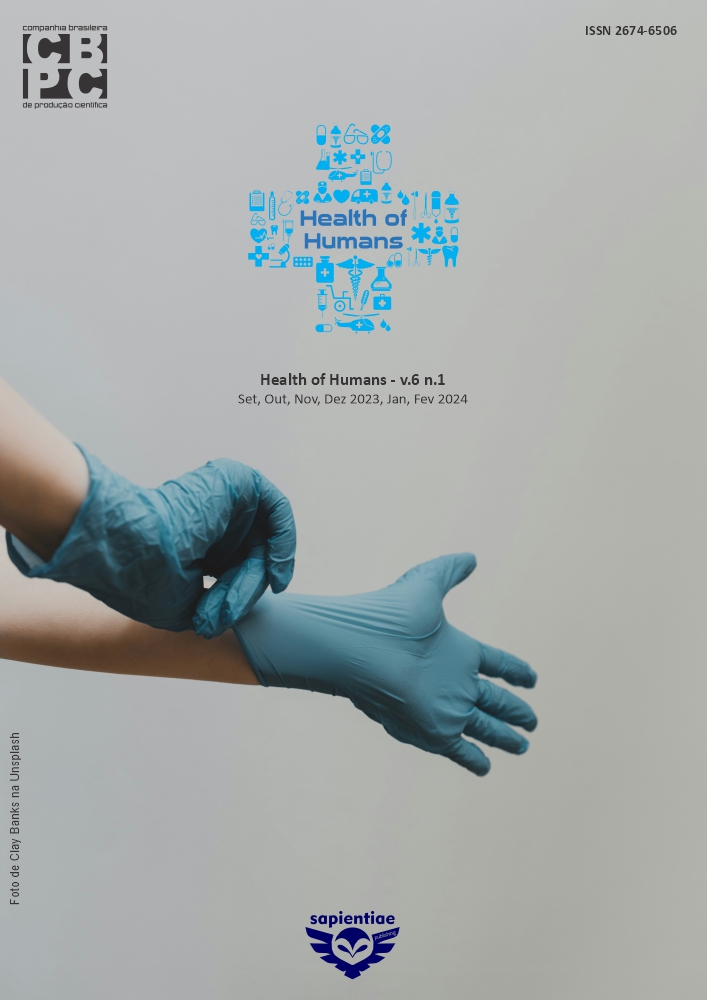Tuberculose: uma análise epidemiológica no estado do Pará, Brasil
DOI:
https://doi.org/10.6008/CBPC2236-9600.2023.001.0008Palavras-chave:
Tuberculose, Baciloscopia, Bacilo de KochResumo
A tuberculose é uma patologia causada pelo Mycobacterium tuberculosis (Bacilo de Koch), tem prevalência do acometimento pulmonar, porém pode manifestar-se em outros órgãos. Em sua forma mais prevalente ela costuma causar grande comprometimento pulmonar e necessita de diagnóstico e tratamento precoce. Pesquisar sobre os dados epidemiológicos relacionados ao diagnóstico da tuberculose no estado do Pará. O presente trabalho trata-se de um estudo epidemiológico observacional e retrospectivo, redigido a partir da criação de uma pergunta PICO e que utilizou os dados coletados a partir do Sistema de Informações de Agravos de Notificações (SINAN) para quantificar e classificar os casos confirmados de tuberculose no estado do Pará no intervalo de janeiro de 2020 a junho de 2022. Do total de casos confirmados no intervalo proposto, uma média de 2600 casos por semestre, pode-se observar que existe uma prevalência da realização da baciloscopia sobre os outros métodos diagnósticos: 75,5% dos pacientes realizaram a baciloscopia contra 21,1% que realizaram o teste rápido e 15,9% que realizaram a cultura do escarro (padrão ouro). Também foi possível verificar através do estudo que existe uma parcela considerável de pessoas diagnosticadas que são de grupos de risco (pessoas convivendo com HIV, pessoas privadas de liberdade e pessoas em situação de rua) sendo mais prevalente o grupo de pessoas privadas de liberdade, devido principalmente a forma de transmissão da doença e a facilidade de contágio nessas instituições. Com os dados coletados pode-se notar que, no estado do Pará, as pessoas de 20-59 e do sexo masculino são o grupo alvo em que a prevenção e rastreio precoce da tuberculose devem ser realizados. Além disso, dentre os grupos vulneráveis estudados, as pessoas privadas de liberdade são outro segmento populacional que também merece atenção quando se trata de prevalência de casos de tuberculose. Ademais, ainda são necessários mais estudos epidemiológicos nesse estado para fins de aprimorar o atendimento e personaliza-lo as populações alvo.
Downloads
Downloads
Publicado
Edição
Seção
Licença
Copyright (c) 2023 Scire Salutis

Este trabalho está licenciado sob uma licença Creative Commons Attribution-NonCommercial-NoDerivatives 4.0 International License.
A CBPC - Companhia Brasileira de Produção Científica (CNPJ: 11.221.422/0001-03) deterá os direitos materiais dos trabalhos publicados. Os direitos referem-se à publicação do trabalho em qualquer parte do mundo, incluindo os direitos às renovações, expansões e disseminações da contribuição, bem como outros direitos subsidiários. Todos os trabalhos publicados eletronicamente poderão posteriormente ser publicados em coletâneas impressas sob coordenação desta empresa e/ou seus parceiros. Os (as) autores (as) preservam os direitos autorais, mas não têm permissão para a publicação da contribuição em outro meio, impresso ou digital, em português ou em tradução.








